On the last post about my wedding dress we saw the inspiration and the process by which it was designed and made — but we didn’t have a good look at the finished piece. Today I’d like to share with you my very own BiniChic wedding look, filled with history, vintage touches, symbolism — and now — beautiful memories.
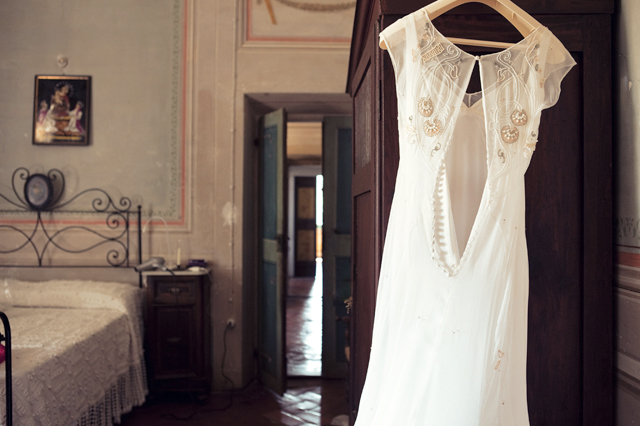
A dress as labored as mine had to be worn with the appropriate hair and make-up. Months before the wedding, I asked my two dear friends Andrea and Maria to style me. They kindly obliged, and after some practice runs in Barcelona to work out the kinks, they made me feel truly special on my wedding day.
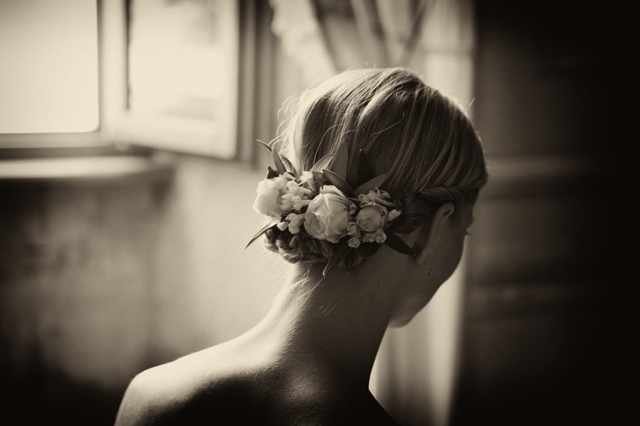
I wanted both the hair and makeup to be very natural and whimsical. The dress had a vintage feel and was beautifully embroidered with beads, so my friends and I felt it would be appropriate to go with natural and slightly pearlescent tones for my make-up. My hair was done in a simple up-do, with strands twisted to my nape where a floral diadem was placed. Jacopo had the same flowers in his boutonniere, including a branch from our tree — the Olive.
I got ready in the most beautiful room in the villa, with the morning Summer light pouring in and sun-kissing the trompe l’oeil walls. The room, which used to be Jacopo’s great grandmothers’ is now known as the “Newlyweds Room.”
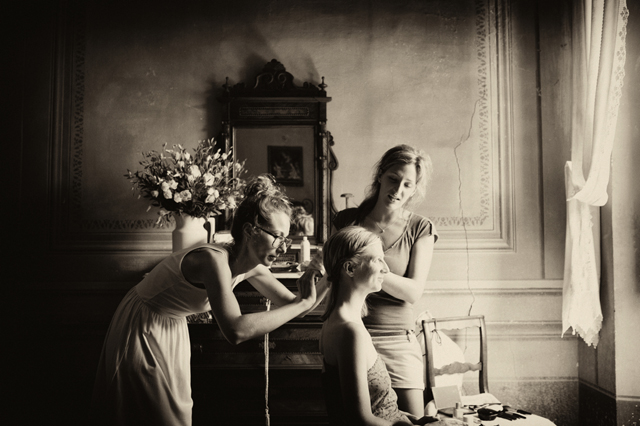
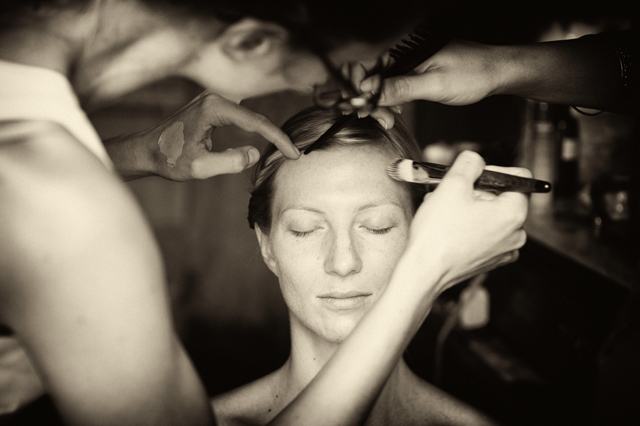
The dress was designed by my mother, who added very special personal touches to it. On each panel there was a symbol that represented an aspect of Jacopo and my life together.
The Intertwined Rings below are for our union in matrimony, as well as a reinterpretation of the “infinity” sign.
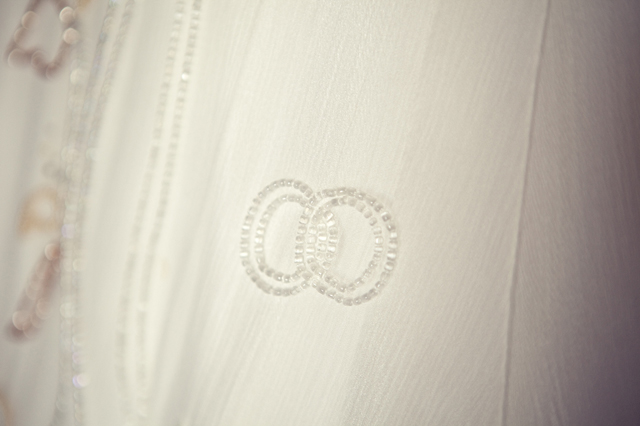
The Bridges are for Jacopo’s family name: Ponticelli, which loosely means “little bridges” in Italian.
The Olive Tree stands as a symbol of our family. Jacopo and I chose that as our tree as we both felt a strong connection to it: his family makes home-grown olive oil and my childhood home is named after this ancient tree.
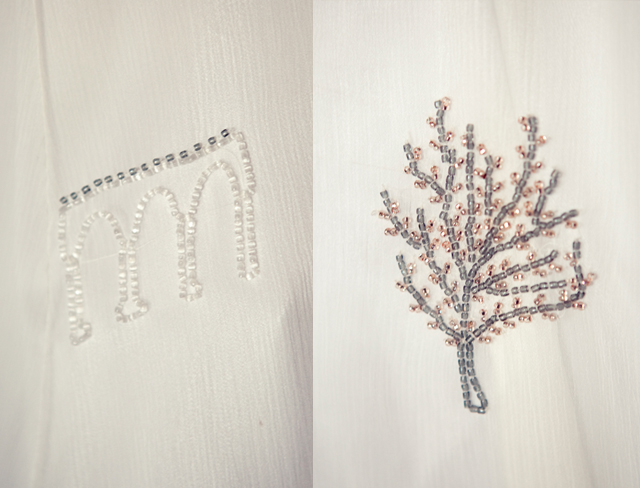
The Waves are a graphic representation of my name, Ona, which means “wave” in my native Catalan.
Pomegranates have had a very strong symbolism throughout history — a pomegranate bursting open has often represented abundance, fertility and prosperity.
The Three Figures (or goddesses) represent the three ages of life: youth, middle age and maturity.
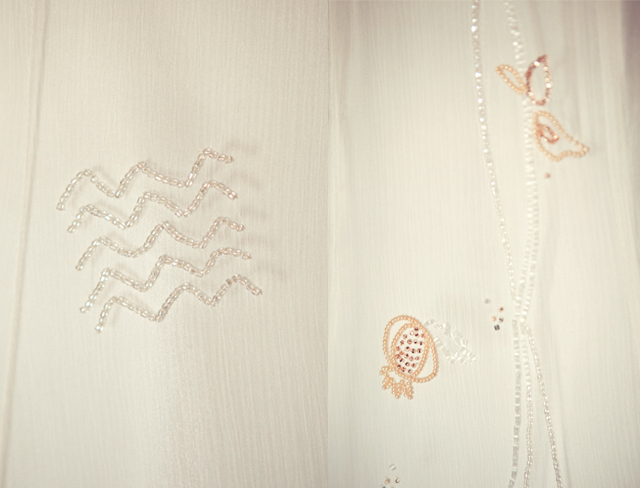
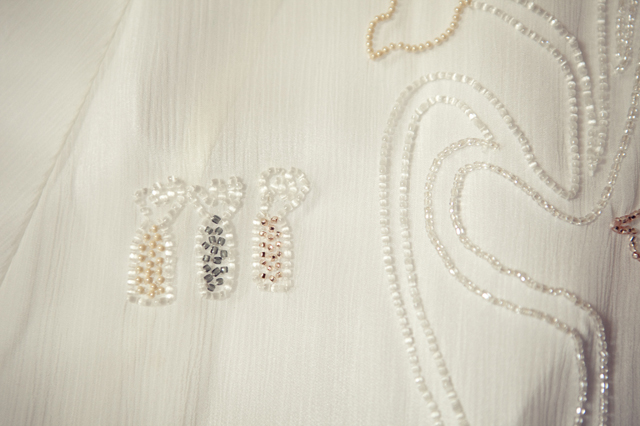
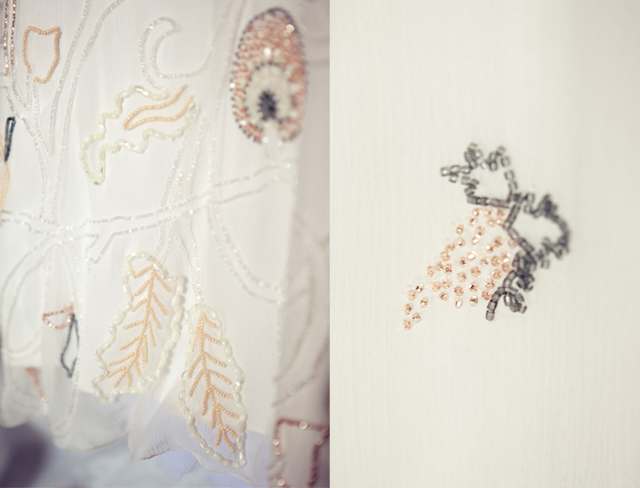
The Grapes symbolize abundance of all the good things in life.
The flowers at the bottom of each panel were inspired by a modernist lamp in the kitchen of Villa Cicaleto, a very meaningful place for us.
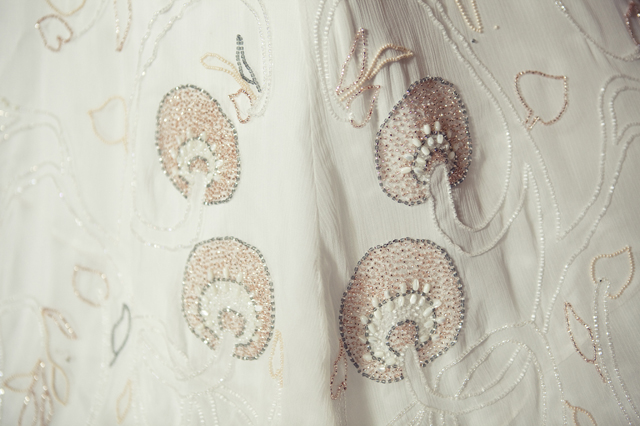
The jewelry I wore to the ceremony was very meaningful. The day before the wedding, Isa and Pietro gave Jacopo and myself some very special items: they gave Jacopo a wonderful 19th Century pocket watch which used to belong to his grandfather, and they gave me the incredible earrings below.
The earrings are a gorgeous Victorian design and belonged to Jacopo’s grandmother Adriana. They are made of pink gold, encrusted with wild pearls and Rubellite Turmaline. I was honored to wear them on such a special occasion, and thought they fit in perfectly with the rest of my look.
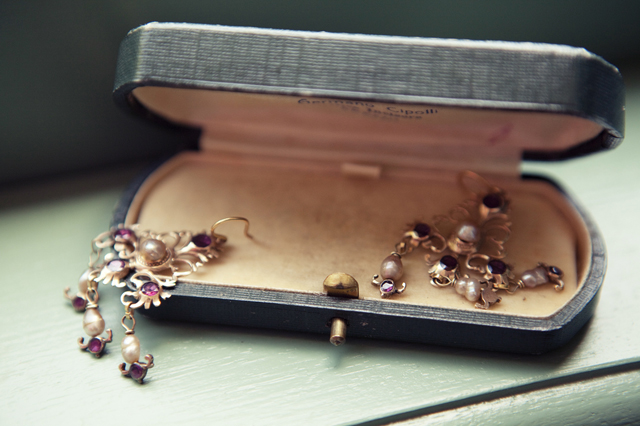
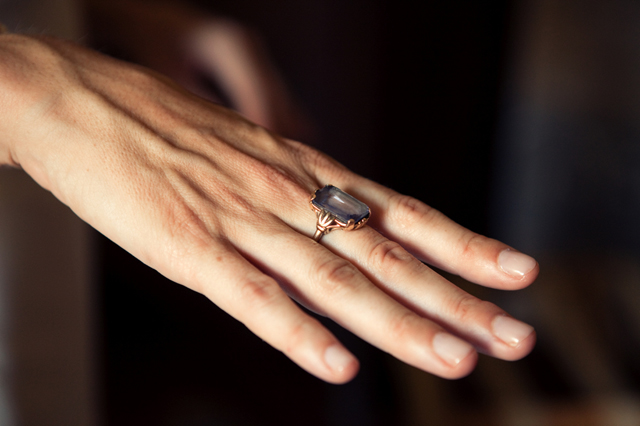
The beautiful Emerald-cut Aquamarine ring above belonged to my grandmother Florence, and was a very special gift from my mother. It was a ring that she often wore, one which her close friends and family associated with her. I thought it was the perfect way to wear blue on my wedding day, as the tradition calls for.
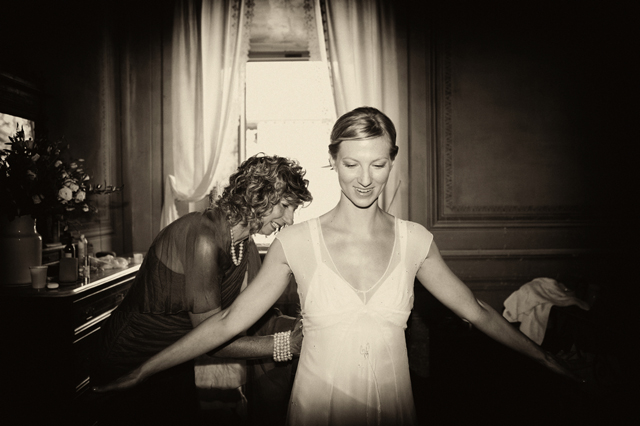
Here is my mother helping me get into my dress, buttoning up the countless buttons on the back. Exciting moments before getting married!
Below are the earrings I wore after the dinner, when I changed to a less formal outfit. They are from the 1920s-30s and have a strong Art Deco style. I loved the shoes I wore because they looked like something a 1940s movie star would have worn — I can’t wait for the chance to wear them again!
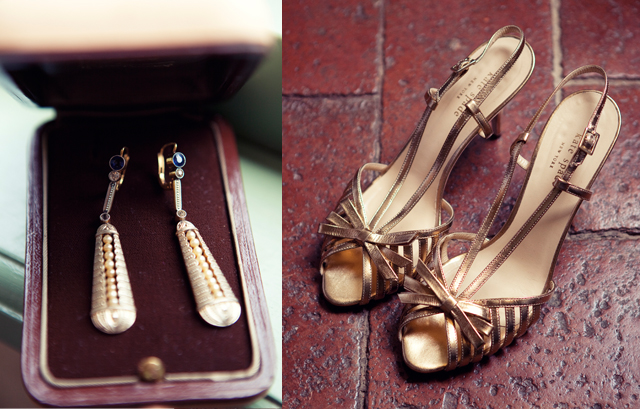
Santa Maria delle Grazie is the very special, albeit small, church where we got married. It sits on a spot which has been considered sacred all the way back to the time of the Romans and Etruscans and holds some Art History treasures inside. The arched portico was a Renaissance addition, and provided our guests with much-needed shade in a the hot Summer sun.
A dear friend of the family, Lidia, made the cushion our rings were attached to and which my godson carried to the altar. She used the same embroidered fabric that my dress was made from (well, the version we didn’t use), tying all of the pieces together.
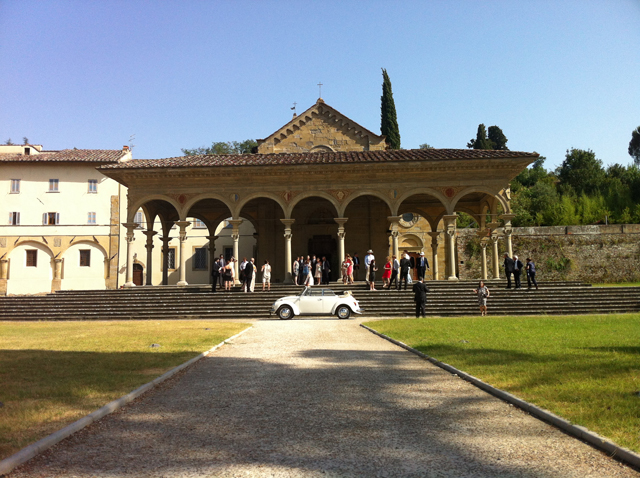
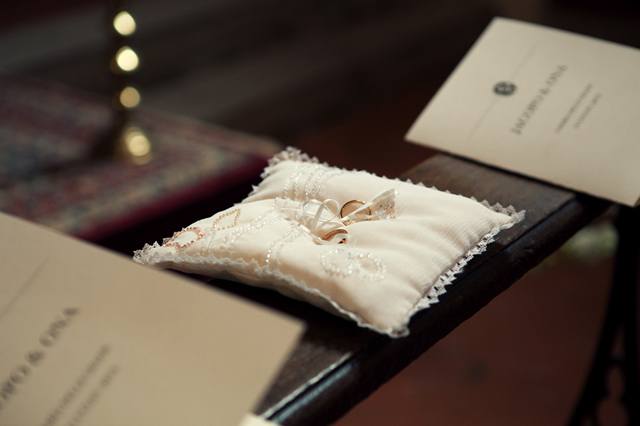
Here are a few intimate views of our wedding day, where you can appreciate the shape and details of my dress, as well as the gorgeous bespoke suit Jacopo had made by Carlo Donati, a very talented tailor in Arezzo.
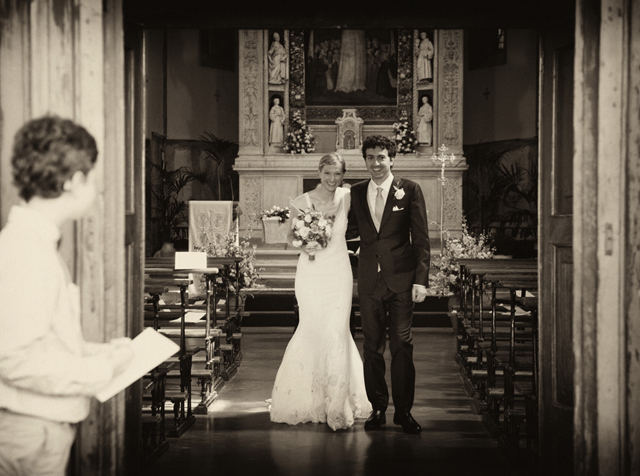
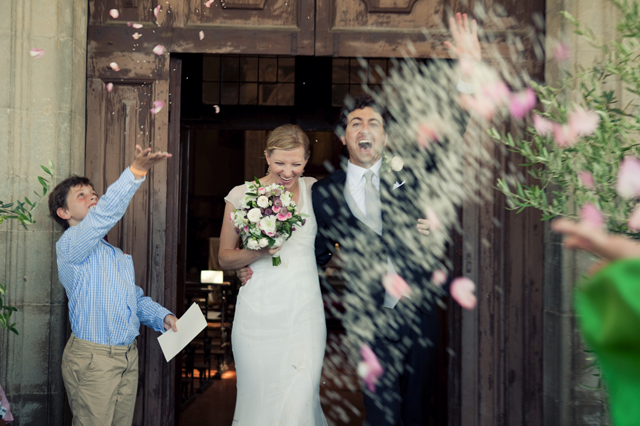
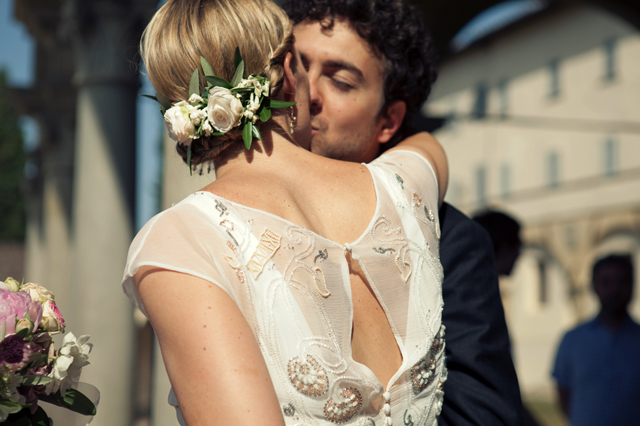
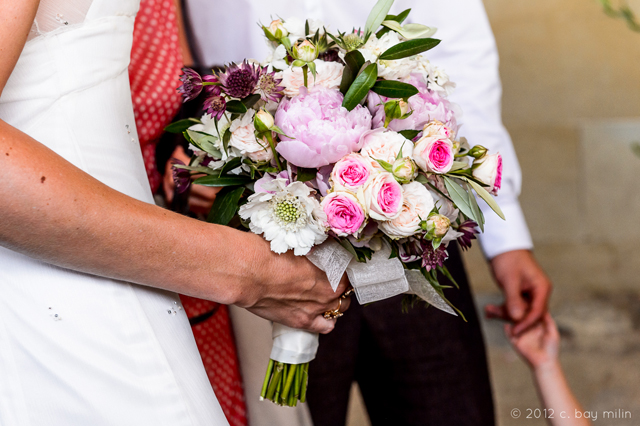
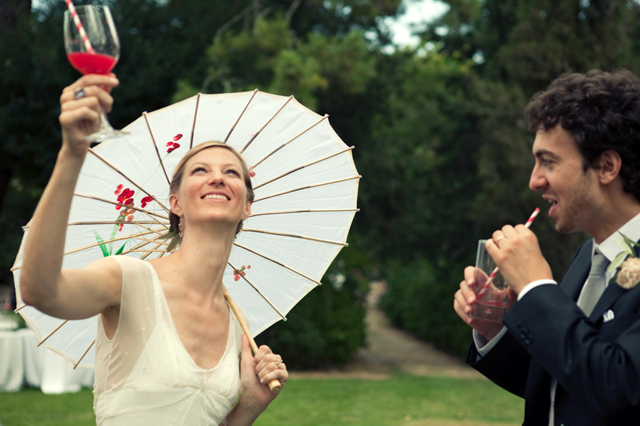
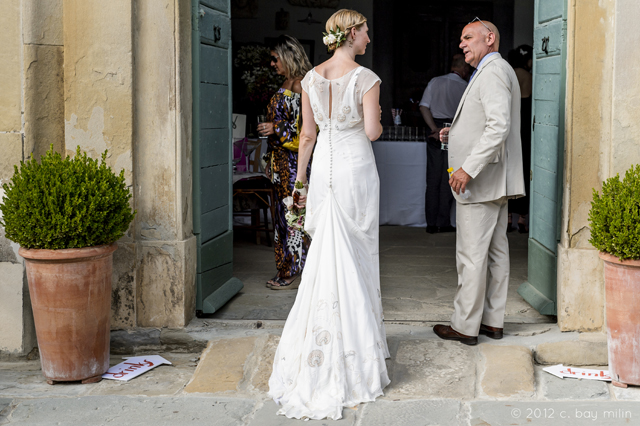
The combined efforts of everybody that made that day (well, week) possible was what made it so unique and fun. In following posts I will show you the Villa, the flowers, the tables, the party and the guests. This is our very own BiniChic wedding — we hope you enjoy it as much as we did.
All Photos by Bárbara Vidal (our wonderful official photographer) except those watermarked by C. Bay Milin.
I would like to thank C. Bay Milin for letting me use his wonderful photographs to illustrate these posts — he is an infinitely talented New York-based photographer.




What a beautiful post! I love seeing all the details of your dress and learning some of the symbolism. Hope you are enjoying your first married holidays!